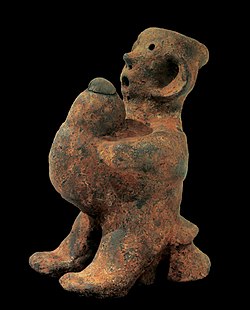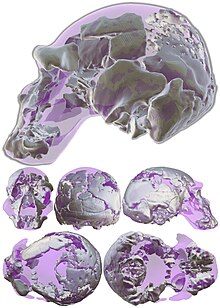
Dar es Salaam is the largest city and financial hub of Tanzania. It is also the capital of the Dar es Salaam Region. With a population of over five million people, Dar es Salaam is the largest city in East Africa and the sixth-largest in Africa. Located on the Swahili coast, Dar es Salaam is an important economic center and one of the fastest-growing cities in the world.

Tanzania, officially the United Republic of Tanzania, is a country in East Africa within the African Great Lakes region. It is bordered by Uganda to the north; Kenya to the northeast; the Indian Ocean to the east; Mozambique and Malawi to the south; Zambia to the southwest; and Rwanda, Burundi, and the Democratic Republic of the Congo to the west. Mount Kilimanjaro, Africa's highest mountain, is in northeastern Tanzania. According to the 2022 national census, Tanzania has a population of nearly 62 million, making it the most populous country located entirely south of the equator.
The modern-day African Great Lakes state of Tanzania dates formally from 1964, when it was formed out of the union of the much larger mainland territory of Tanganyika and the coastal archipelago of Zanzibar. The former was a colony and part of German East Africa from the 1880s to 1919 when, under the League of Nations, it became a British mandate. It served as a British military outpost during World War II, providing financial help, munitions, and soldiers. In 1947, Tanganyika became a United Nations Trust Territory under British administration, a status it kept until its independence in 1961. The island of Zanzibar thrived as a trading hub, successively controlled by the Portuguese, the Sultanate of Oman, and then as a British protectorate by the end of the nineteenth century.

Tanzania comprises many lakes, national parks, and Africa's highest point, Mount Kilimanjaro. Northeast Tanzania is mountainous, while the central area is part of a large plateau covered in grasslands. The country also contains the southern portion of Lake Victoria on its northern border with Uganda and Kenya.

The Chagga are a Bantu ethnic group from Kilimanjaro Region of Tanzania. They are the third-largest ethnic group in Tanzania. They historically lived in sovereign Chagga states on the slopes of Mount Kilimanjaro in both Kilimanjaro Region and eastern Arusha Region.

Shaaban bin Robert, also known as Shaaban Robert, was a Tanzanian poet, author, and essayist who supported the preservation of Tanzanian verse traditions. Robert is celebrated as one of the greatest Tanzanian Swahili thinkers, intellectuals and writers in East Africa and has been called "poet laureate of Swahili" and is also known as the "Father of Swahili." He is also honoured as the national poet.

Kilimanjaro Region is one of Tanzania's 31 administrative regions. The regional capital and largest city is the municipality of Moshi. With the 3rd highest HDI of 0.640 in the country, Kilimanjaro is one among the top five most developed regions of Tanzania. According to the 2012 national census, the region had a population of 1,640,087, which was lower than the pre-census projection of 1,702,207. For 2002–2012, the region's 1.8 percent average annual population growth rate was the 24th highest in the country. It was also the eighth most densely populated region with 124 people per square kilometer. The most well-known tribes in the Kilimanjaro region are the chagga, rombos, and pare.

The University of Dar es Salaam (UDSM) is a public university located in Ubungo District, Dar es Salaam Region, Tanzania. It was established in 1961 as an affiliate college of the University of London. The university became an affiliate of the University of East Africa (UEA) in 1963, shortly after Tanzania gained its independence from the United Kingdom. In 1970, UEA split into three independent universities: Makerere University in Uganda, the University of Nairobi in Kenya, and the University of Dar es Salaam in Tanzania.

The International School of Tanganyika (IST), founded in 1963, is an international school in Dar es Salaam, Tanzania. The school is an IB World School that hosts the Primary Years, Middle Years, and Diploma programmes. IST operates on two campuses in desirable suburbs of Dar es Salaam, Tanzania. IST Elementary serves children from age 3 to Grade 5 while IST Secondary, 5 kilometers away, serves Grades 6 – 12. IST is fully accredited by the Council of International Schools (CIS) and the Middle States Association (MSA).

Tanga Region is one of Tanzania's 31 administrative regions. The region covers an area of 26,667 km2 (10,296 sq mi). The region is comparable in size to the combined land area of the nation state of Burundi. The regional capital is the municipality of Tanga city. Located in northeast Tanzania, the region is bordered by Kenya and Kilimanjaro Region to the north; Manyara Region to the west; and Morogoro and Pwani Regions to the south. It has a coastline to the east with the Indian Ocean. According to the 2022 national census, the region had a population of 2,615,597.

Mark James Mwandosya is a Tanzanian CCM retired politician and a former Member of Parliament for Rungwe East constituency, who is currently serving as the chairman of the Board of Directors of Ewura Tanzania and the chairperson of the Energy Regulators Association of East Africa Annual General Assembly.
The Anglican Church of Tanzania is a province of the Anglican Communion based in Dodoma. It consists of 28 dioceses headed by their respective bishops. It seceded from the Province of East Africa in 1970, which it shared with Kenya. The current primate and archbishop is Maimbo Mndolwa, enthroned on 20 May 2018.

The Arusha people are a Bantu ethnic and indigenous group based in the western slopes of mount Meru in Arusha District of Arusha Region in Tanzania. The Maasai regard the Arusha people as related as they were once a part of the immigrant Maasai whom arrived in Arusha in the late 18th century from Kenya. The Arusha people are not to be confused by Arusha residents who are a mix of people of different ethnic backgrounds that are born and reside within the borders of the Arusha Region.
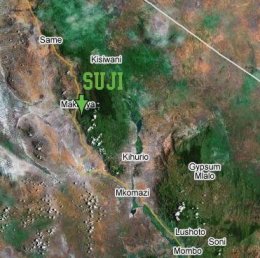
Suji is a small village in the Pare Mountains, in the Kilimanjaro region of north-eastern Tanzania. According to the 2002 census, the village has a population of around 8,072. The latest census conducted in 2022 shows that there is an about 50% decline in population. Both sexes (4,681); Male (2,285); Female (2,396). The majority of the villagers are of the Pare tribe (legend holds that they moved up the mountains as a security measure in a similar way other villages built forts. Their main antagonists were Maasai warriors who they call 'Kwavi'. The village is situated approximately 20 km from Makanya, a town on the main Dar es Salaam - Moshi road. In terms of religion, the majority of the residents are Seventh Day Adventists.
The following is a timeline of the history of the city of Dar es Salaam, Tanzania.
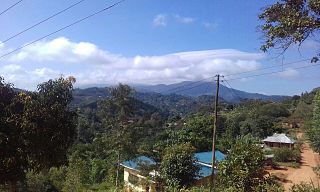
Ugweno is located within the Mwanga District, Kilimanjaro Region, Tanzania, Africa. It is situated at 3° 39' 0" South and 37° 39' 0" East in the Pare Mountains. The people who live in Ugweno are known as Wagweno and their common language is Kigweno.
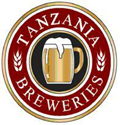
Tanzania Breweries Limited, also referred to as TBL, is the oldest and largest brewing company in Tanzania.

Usangi - Northern Tanzania. Usangi is part of North Pare which consists of Usangi and Ugweno. Usangi is located between Ugweno in the north and Mgagao in Southern Pare. To the west it borders with Mwanga, the current administrative headquarters of Mwanga District, and to the east it faces the Tanzania border with Kenya. Usangi is located on the Pare Mountain ranges which lead up to the Kilimanjaro mountain to the north. The Usangi Kingdom was ruled by the Sangi rulers referred to as Wafumwa (Fumwa being the root word. The rulers ranged from Mfumwa Sangiwa Makoko who died in 1881 up to Mfumwa Shabani Mtengeti Sangiwa who ruled until 1962 when traditional rule was abolished following the independence of Tanganyika in 1961. The Kingdom was briefly ruled by a non-Sangi ruler, Mfumwa Sabuni, before the Sangi reclaimed it and Mfumwa Shabani was crowned.
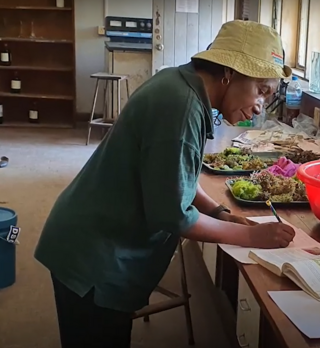
Flower Ezekiel Msuya is a Tanzanian phycologist. She specialises in algaculture and integrated aquaculture.


